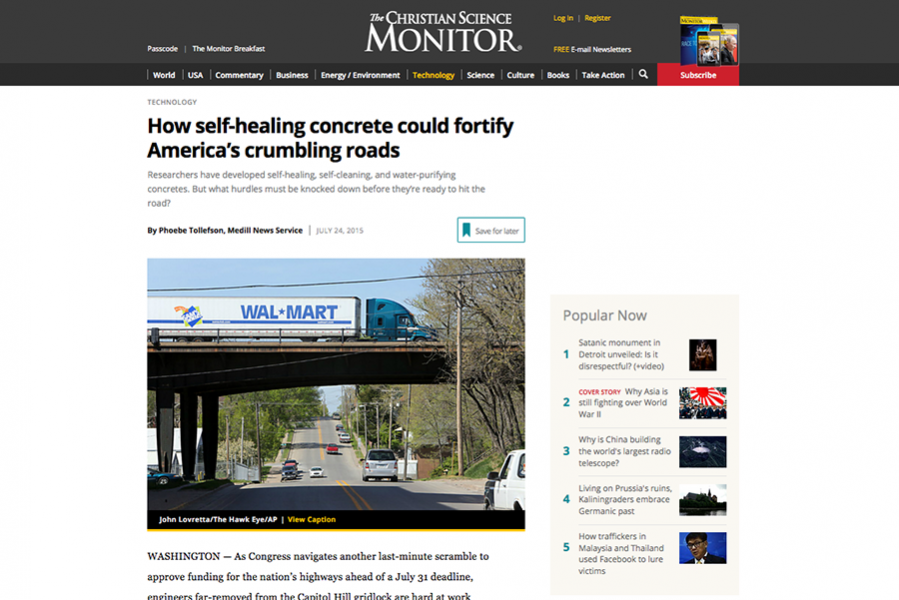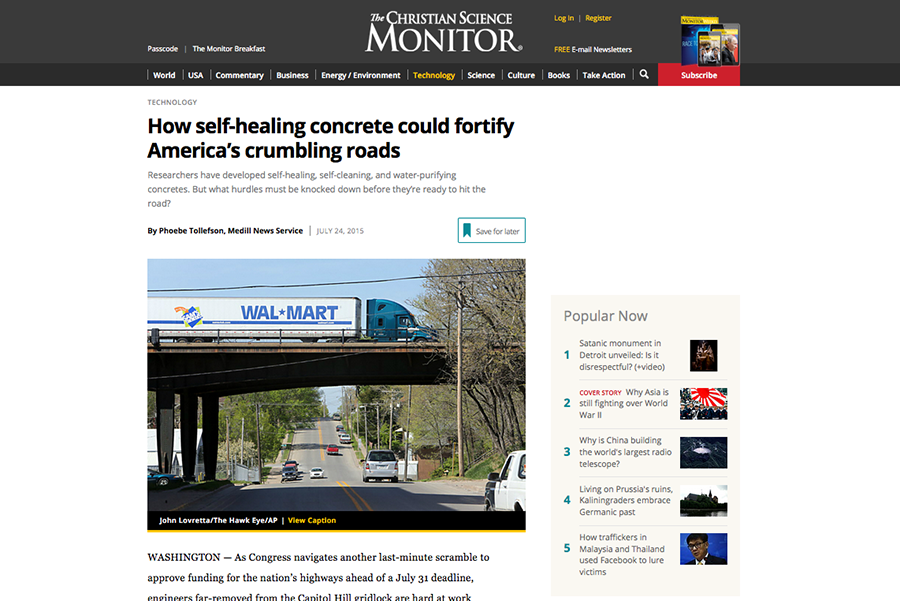In a story July 24 about advances in concrete technology, the Christian Science Monitor talked to the School's Kim Kurtis about her work with titanium dioxide in the ubiquitous material used for roads, bridges and buildings.
Kurtis and her team have studied a special form of the mineral that’s added to concrete and reacts with light. That leads to the destruction of organic matter on the concrete’s surface. More details from the Monitor:
Ms. Kurtis’ team has examined the use of a special form of the mineral titanium dioxide, which has been manipulated to make the mineral react to light. When light hits the surface of a concrete structure containing this special type of titanium dioxide, it begins a chain of events that eventually destroys organic material on the surface of the concrete, such as bacteria. Moss and fungi that feed on bacteria are unable to grow without the food source.
“They can also interact with pollutants in the air – things like nitrogen oxides or volatile organic compounds – and bind those to surfaces to essentially clean the air,” Kurtis says.
Kurtis noted that the high cost of self-cleaning concretes make them best suited for smaller scale projects in particularly dirty environments, such as a section of wall facing a street with heavy pollution.
Read the full story on the Monitor’s website.


